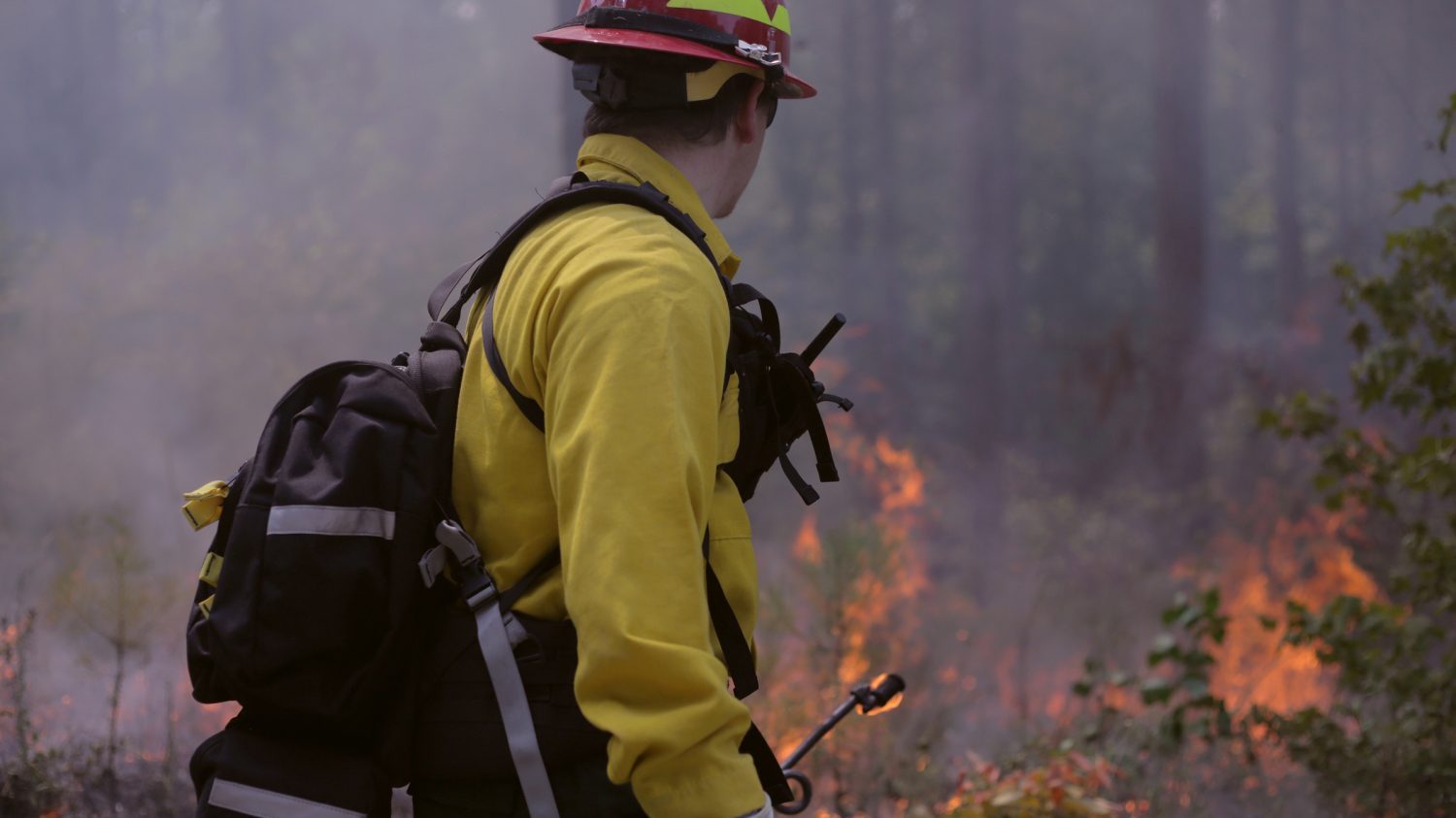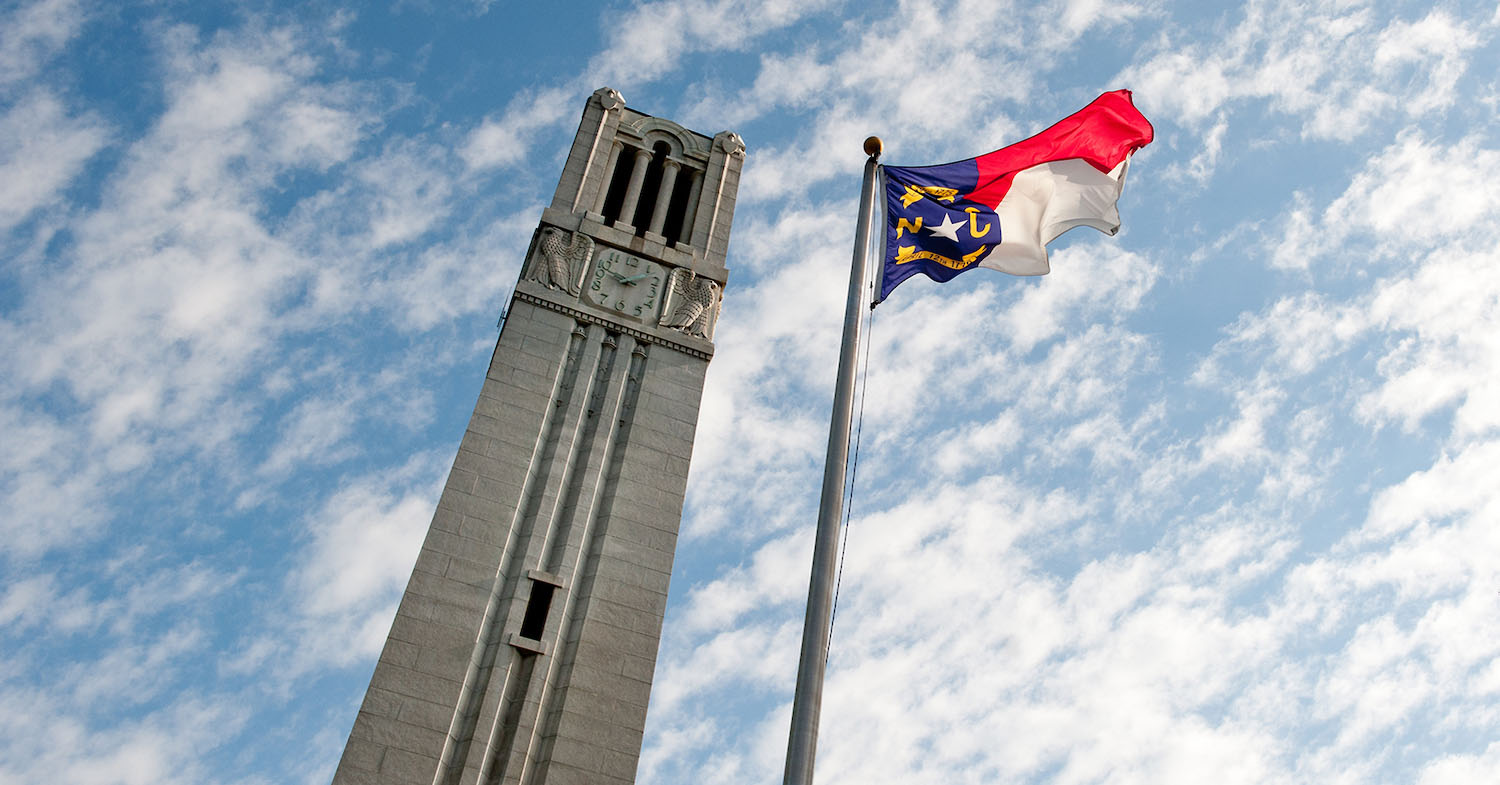Learning to Fight Fire with Fire at Summer Camp

This is not your average summer camp. Our students don’t sit by the fire and sing camp songs in sandals. The required nine-week residential Summer Camp at the 2,400-acre G.W. Hill Forest in Durham engages rising Forestry Management juniors in teamwork and practical application of classroom concepts. Beginning the second week of May, students cram in 5 classes covering everything from silviculture and forest communities to forest system mapping and mensuration to wildlife and fire management. Did I mention it’s intense? (Watch their video.)
During the week, summer campers become certified level II firefighters (think Second Lieutenant in the armed forces), a designation that students will only find in North Carolina at NC State. Each day begins around 6am and ends around 9pm since the week covers four important aspects of certification: fire behavior and ecology, fire suppression and safety, human factors on the fire line, and fire incident command systems.
Dr. Joseph Roise, professor of Forestry and Operations Research and the Graduate Program Director, brings in career professionals, many are CNR alumni, at the State Forest Service, State Park Service and The Nature Conservancy to help teach the courses usually only taught to agency and industry professionals. Students participating in Fire Week, often go on to get jobs as prescribed burners, Burn Bosses or consultants since they have a much wider opportunity set with a fire certification. Other students find summer jobs fighting wildfires in the west, which are very lucrative opportunities after additional training, according to Dr. Roise.
“It’s a very fun week,” he said. “We get to meet a lot of alumni and I act as a sort of director for the program, overseeing all the different components, especially the culminating prescribed burn at the end of the week, which everyone looks forward to.”
This year, the College of Textiles is collaborating with students and faculty at Summer Camp to test fire shelters made by the Textile Protection and Comfort Center (T-PACC). Dr. Roger Barker, T-PACC Director, is working on a FEMA Assistance to Firefighters Grant to create lighter, safer fire shelters since all woodland fire fighters are required to carry one. Fire shelters are considered a fire fighter’s last defense and are only deployed when he or she is trapped by wildfires. The shelters, made of aluminum foil, silica and fiberglass, look like reflective sleeping bags and protect fire fighters from extreme heat when a fire passes over them. T-PACC will conduct an experimental protocol test for an advanced material fire shelter as a pre-test before conducting tests at fires around the country later in the summer or next year.
Burning Through Misconceptions
A prescribed burn is an important and cost-effective forest management tool that for many years suffered a bad rap from misinformation. So, let’s set the record straight:
- Prescribed burns are not, nor have they ever been, nature killers. Fire helps preserve, maintain and restore habitats. Most wildlife has adapted to wildfire and depends on fire to preserve their current habitats. For example, turtles and snakes bury themselves underground during a fire and other animals like birds and deer leave the area temporarily, returning almost immediately to eat the new grasses and food growing after the fire. Prescribed burns also do not occur during nesting season, which protects young birds.
- Prescribed burns are ecologically important. Prescribed burns set back the successional species clock to maintain the current ecosystem of trees and wildlife. Without burns, shade tolerant species shade out grasses and food for wildlife and non-native hardwood species out compete native trees for habitat space. Prescribed burns reset ecological succession to maintain and restore the ecosystem to an earlier state. Fire adaptive native tree species usually have thick bark and seedlings will grow back after a burn, allowing sun to pass through the trees to the forest floor so grasses and other species can survive. High intensity burns, like wildfires, can set the successional clock back to zero. At first it looks like everything is dead, but soon grasses and root sprouts appear and the system starts over again.
- Prescribed burns help prevent wildfires. With no fuel, naturally occurring wildfires die off and don’t become large, dangerous wildfires. Prescribed burns eliminate natural fire fuel like leaves, brush, debris, grasses, bushes, dead trees, etc. by using up the fuel in a controlled manner instead of leaving it to chance with a wildfire ignited through lightening or accidental human activity.
- Prescribed burns are controllable. Fire is not uncontrollable. It’s dangerous, but very controllable. Fire was man’s first tool and we’ve learned to control it in everything from combustion engines to electricity. With proper safety training, controlled burns are very safe for burners and the surrounding community.
- Prescribed burns do not pollute the air. Prescribed burns are highly dependent on weather, which must be just right before a burn ever happens. Local prescribed burners consider smoke dissemination and dispersal to prevent smoke in populated areas like I-40, airports and REX hospital. Ideally smoke will rise one mile and then blow away, which requires an unstable weather pattern to raise smoke straight up. (Fog is considered a stable pattern since it stays low and does not disperse). Burners use the National Weather Service Fire Weather forecasts to determine if weather will be ideal in a specific burn location.
- Prescribed burns are regulated. Prescribed burns require state and local permits. Certified Prescribed Burners submit a burn plan to identify the best conditions for the burn, including temperature, humidity, wind, moisture of vegetation, and conditions for smoke dispersal, as well as directions for starting, controlling and extinguishing the burn.
- Prescribed burns have a history of success. Today, North Carolina actually has the most fires and the most acres burned of any state, with a bulk of fires resulting from prescribed burns on sites less than 10 acres. Colonists, following lessons from Native Americans, began prescribed burns almost immediately after jumping off the boat in the 1600s. They burned land for public safety around settlements, to prevent pests like ticks, and to create space for agriculture. And before the English and Spanish colonists, Native Americans were burning land so grasses would grow for buffalo, elk and deer.
More information about prescribed burns:
- Categories:


